The Ahvazi people continue their uprising that was sparked in early July 2021 due to the continuous violations practiced by the Iranian regime against the Ahvazis and non-Persian nationalities in general, in light of the regime’s plans to obliterate the identity of the Arab Ahvazi people and change the demography, in addition to the repression and executions practiced by the regime against rebellious Ahvazi youth, which brings to mind the historical crimes committed by the mullah regime against the Iranian people of all sects.
According to human rights reports, more than 5,000 people were executed in Iranian prisons in the summer of 1988 for membership in or affiliation with mostly left-wing opposition groups, including members of the Marxist-Leninist People’s Fedaian, the Communist Tudeh Party, and activists of non-Persian ethnicities, especially the Ahvazi Arabs, the Kurds, the Baluchis and the Turkmen.
Ahmed Montazeri
Ahmed Montazeri, son of late Iranian cleric Hossein Ali Montazeri, published a recording three years ago exposing the atrocities of the so-called “death committees” that carried out the executions in 1988 in Iran against opposition detainees. He was sentenced to several years in prison, but the sentence was not implemented.
Montazeri revealed the content of an audio recording relating to his father’s meeting with the officials of the 1988 death committee, stating that he was not allowed to broadcast the audio recording.
In a video clip broadcast on Twitter, Montazeri indicated that the recording revealed the involvement of four people in the executions of detainees in Iranian prisons, and he considered the 1988 executions “the biggest crimes of the Islamic Republic.”
“A group of four people who were responsible for carrying out the executions in 1988 visited my father in January 1989, and there is an audio file recorded for this meeting,” he explained.
According to Iran International, the judicial and security authorities who attended this meeting with Hossein Ali Montazeri are: Hossein Ali Nayeri, a Sharia judge at the time; Morteza Eshraghi, a Tehran prosecutor at the time; Ebrahim Raisi, an assistant prosecutor at the time and the current president; and Mostafa Pourmohammadi, the representative of the Intelligence Ministry in Evin Prison at the time.
Of course, Montazeri received threats from security and judicial officials of six years in prison if he published the audio file related to the aforementioned meeting, as well as other files related to the 1988 executions.
Supreme Leader Ruhollah Khomeini
The religious reference for the crime was the fatwa of late Supreme Leader Ruhollah Khomeini under the slogan “Jihad against the infidels”. In practical implementation of Khomeini’s fatwa, what were known as “death committees” were formed in Tehran and in various regions of Iran. Within months, more than 30,000 political prisoners were executed. The majority of them were Mojahedin-e-Khalq, at a time when those committees included prominent Iranian officials.
These confessions were made by one of the Iranian judges involved in the killing of thousands of political opponents at the end of the 1980s in the prisons of the mullah regime, with new confessions confirming that Khomeini had ordered the execution of the 1988 massacre.
Ali Razini, a former senior judicial official in Tehran, said that the trials of these dissidents took place “very quickly” in the summer of 1988 on the orders of the former Iranian leader.
Razini also said that Khomeini called on them during that period to confront the activities of the opposition People’s Mojahedin Organization of Iran (PMOI), which is currently based in Paris and represents the National Council of Resistance of Iran (NCRI), while they remained in detention in Tehran’s prisons.
He stressed that the orders issued to them in what were known as “death courts” by the head of the Iranian regime implied the need to expedite the pace of litigation against these prisoners who were later executed inside the prisons, as the death toll reached about 30,000 people.
Ali Khamenei
According to Sky News Arabia, the PMOI released a statement confirming that “most of the main institutions of the regime are run by officials involved in the massacre.”
The opposition “managed to obtain names and information about 59 senior officials responsible for this massacre, whose criminal record was hidden for three decades, and they now occupy sovereign positions in the various organs of the regime.”
The statement added that “these individuals had participated in the death committees in Tehran and ten provinces in the country,” stressing that “investigations regarding the disclosure of the names of the rest of the criminals are still ongoing.”
Among the 59 most prominent figures mentioned in the opposition’s report, “Supreme Leader Ali Khamenei, who at the time of the massacre was the president of the republic for the regime, was one of the main stakeholders in making the decision.”
In addition to Khamenei, the opposition revealed the involvement of “four members of the Expediency Council,” including Ali Akbar Rafsanjani, former head of the Expediency Council, who was then the speaker of parliament and the deputy commander-in-chief of the armed forces.
Other members included Ali Fallahian, the sponsor of the Ministry of Intelligence during the massacre and then Minister of Intelligence; Gholam-Hossein Mohseni-Eje’i, the representative of the judiciary in the Ministry of Intelligence; and Majid Ansari, head of the prison authority during the massacre, according to the report.
The report indicated that “the message of Hossein Ali Montazeri, Khomeini’s deputy, who was dismissed in 1988 because of his opposition to the massacre, confirms that Khamenei and Rafsanjani were with the late leader in making the decision to execute the prisoners.”
The list of names involved in the massacre included officials in the Assembly of Experts, the judiciary (including the current Minister of Justice and former ministers), the Guardian Council, the Presidency of the Republic, the administrative bodies, the army, and financial institutions.
Kurdish massacre
The massacre of the Kurds is one of the biggest crimes in the mullahs’ record, especially since it came two months after the Iranian Revolution, as the regime quickly revealed its bloodiness through this massacre, which claimed many lives.
It is known that the non-Persian nationalities in Iran, whether Ahvazis, Baluchis, Azeris, or Kurds, represent a chronic headache for the regime, which is always trying to stifle them, abuse them, and obliterate their identity. This started early and immediately after coming to power, but the regime has not yet succeeded in achieving its goal, being unable to subjugate them.
Among the groups betrayed were the Kurds of Iran who had engaged in the revolution against the Shah and entered into negotiations with the new regime to obtain their national rights. With Khomeini’s control of the country’s joints in the early 1980s, he demanded on official radio that the army head towards Sanandaj (the capital of Kurdistan Province) to suppress those he described as evil. To this day, the series of confrontations with Kurdish activists continues.
After revolution, the Kurds demanded that Khomeini fulfill his promises to them, but he turned against these promises and began the journey of persecuting the Kurds. The Revolutionary Guards committed massacres against the residents of Kurdish cities in Iran, in implementation of a fatwa issued by Khomeini.
The fatwa considered the Kurdish parties that had liberated their cities after the fall of the Shah’s regime as “apostates” that should be liquidated, which resulted in the killing of more than 10,000 Kurdish civilians who were executed in the streets without trial.
The leader of the Kurdish opposition party, Arif Bawecani, said, “Khomeini’s fatwa had sectarian and doctrinal aims through which he wanted to incite the sons of other nationalities against the Kurds and their political forces, after he felt their influential role in shaping the country’s future political scene. This ominous fatwa launched a sectarian war. An abomination against our people is still raging and claimed the lives of tens of thousands of our children.”
The Kurdistan Democratic Party of Iran (KDPI), whose leader Abdul Rahman Ghassemlou was assassinated by the Khomeini regime, believes that the failure of the Tehran regime to sign international conventions prevents filing lawsuits against it in international forums. According to Kurdish opposition sources, the outcome of the Kurds’ losses from the four-decade conflict has reached more than 50,000 dead.
Mustafa Hijri
So far, the regime has not stopped targeting the Kurds. KDPI leader Mustafa Hijri confirmed in an interview with the Independent Arabic, “The regime’s aggression is still going on. In 2018, the number of Kurdish political prisoners reached about 467 Kurdish prisoners from a total of 1,152 political prisoners, and 93 Kurdish prisoners were accused of fighting God, and 63 of them were executed.”
Hijri explained that the charge of “fighting God”, according to what the Iranian judiciary describes, is a punishment for those who fight God as the regime defines, and the perpetrator is punished with death. But human rights reports speak that what Iran describes as “fighting God” is a charge that Tehran uses to tickle religious feelings with the aim of eliminating all who oppose it


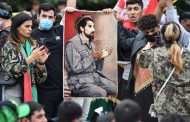
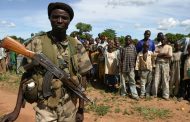
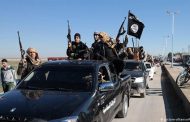
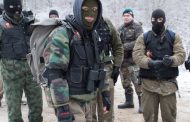
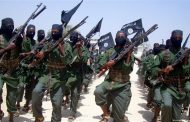
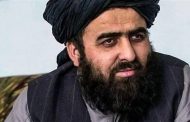
































admin in: How the Muslim Brotherhood betrayed Saudi Arabia?
Great article with insight ...
https://www.viagrapascherfr.com/achat-sildenafil-pfizer-tarif/ in: Cross-region cooperation between anti-terrorism agencies needed
Hello there, just became aware of your blog through Google, and found ...